Ghost Gum
The ghost gum (Corymbia aparrerinja, formerly Eucalyptus papuana) is one of the most iconic trees of the central desert of Australia. Its common name refers to its chalk white trunk which glows in the moonlight and was seen as evidence to the presence of living spirits. These striking trees stand out in stark contrast to the red gorges and ranges of central Australia. Ghost gums were a favorite subject of the famed Australian Aboriginal landscape artist Albert Namatjira.
Common Mulga
The common mulga (Acacia aneura) is the most abundant acacia of the hot arid interior of Australia. The name mulga comes from an aboriginal word meaning “long, narrow shield” and the strong wood was used to make weapons such as spears and boomerangs. Mulga is a small tree typically less than 20 feet tall with grey-green foliage and cylindrical sulphur yellow flowers favored by bees followed by flat brown seed pods high in protein.
Emu
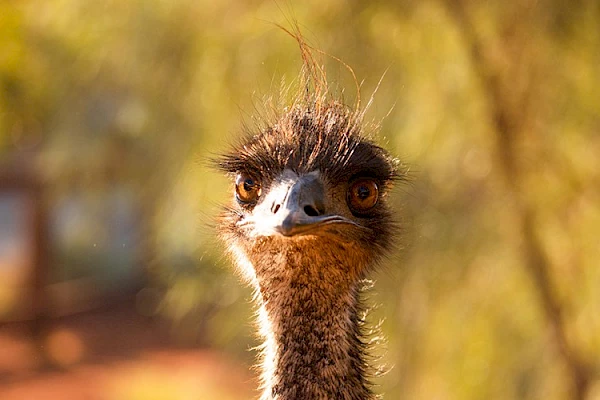
The emu is the second largest bird in the world and a very vocal communicator. It has a unique throat pouch, which allows it to make deep booming, drumming, grunting, and even hissing sounds. Despite their size, emus are excellent swimmers and their strong legs enable them to jump up to 7 feet in the air. While running, an emu’s stride is nearly 9 feet long and they can sprint long distances, reaching speeds of up to 30 miles per hour. Although emus have wings, they are flightless. Their feathers have a unique design, which gives them a hair-like appearance and protects them from the sun.
Laughing Kookaburra
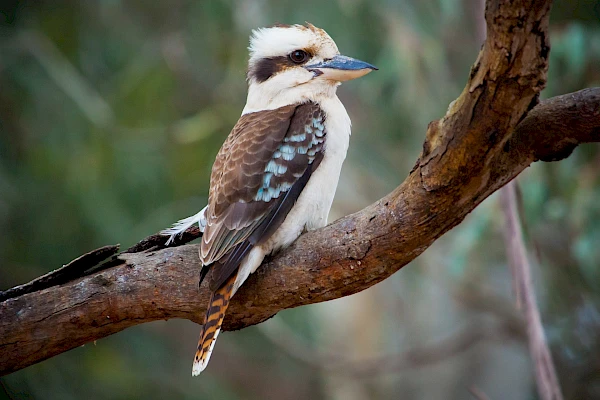
The laughing kookaburra is the most prominent member of the kingfisher family and gets its name from its maniacal-sounding call, replicating a variety of chortles, deep laughs, and hoots.
Nicknamed the “bushman’s alarm clock” for its early dawn and dusk cackling, family groups of kookaburras live in the same territory year-round and communicate boundaries to other groups with their distinctive calls.
Laughing kookaburras can alter their loud vocalizations to find others for courtship, raising alarms, showing aggression, and begging for food.
Mongoose are very territorial, with an alpha female leading the pack.
They are omnivores, eating mostly arthropods and small vertebrates and eggs. They forage for food in packs, but each individual catches its own food.
Blue-Tongued Skink
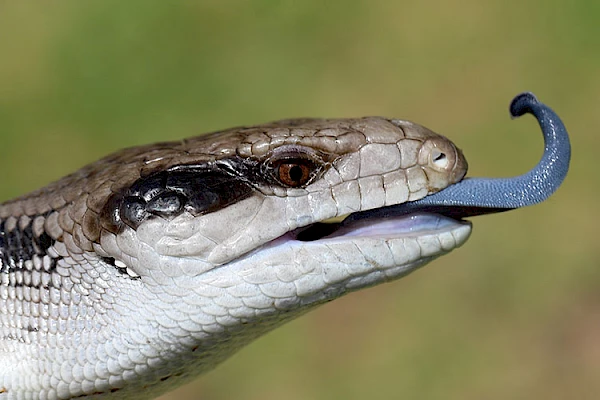
The blue-tongue skink spends most of the day searching for food. Although it is slow-moving, its brown-banded body helps it camouflage into the surrounding landscape.
When threatened, blue-tongue skinks open their mouth wide and deploy their ultraviolet blue-tongued, sharply contrasting their pink mouth. They also flatten their body to appear larger, thereby frightening potential predators.
Blue-tongued skinks get around using a serpentine (snake-like) movement, slithering on their bellies and using their feet to push themselves along.
Bettong
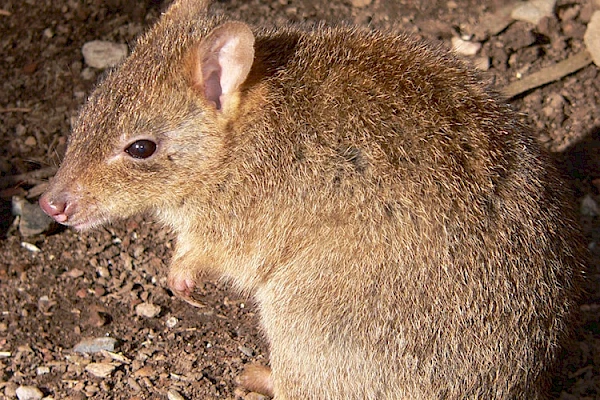
Bennett’s Wallaby
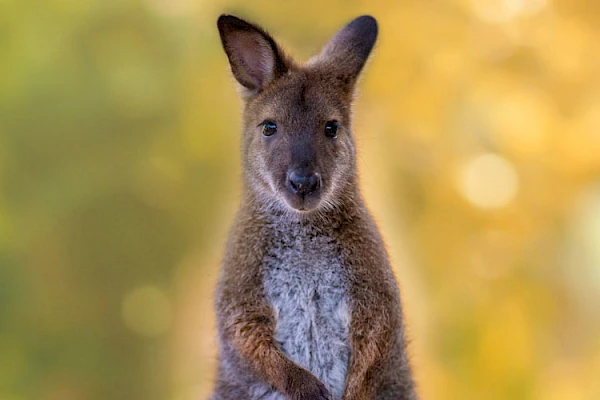
Bennett’s wallaby is a member of the macropod family. Macropod means “large foot” and refers to a family of marsupials including kangaroos and pademelons native to Australia.
Well-developed males tend to be aggressive with each other and they fight by ‘boxing’. When these wallabies feel threatened, they stamp their feet to alert others. They can also communicate using their ears, scent marking, and some vocalizations like growling and hissing.
Bennett’s wallaby has grey to reddish fur coloration, white cheek markings, and a patch of reddish fur on the neck. It has a white or light grey abdomen and a dark brown muzzle. Its head-body length reaches up to 40 inches, males being generally larger than females. Its ears are longer in proportion to other wallaby and kangaroo species and can turn to the side, which contributes to its keen hearing.
Short Beaked Echinda
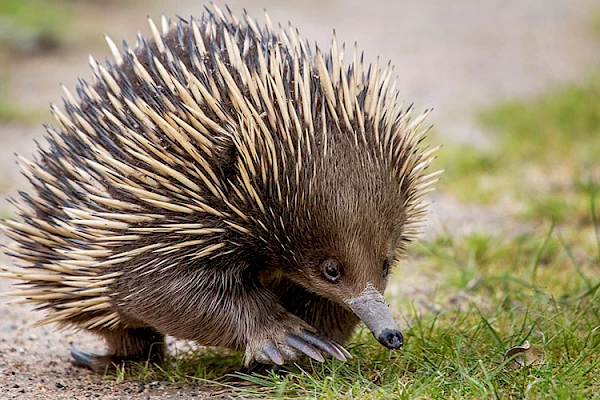
During the mating season, one to ten males form a line and follow a receptive female, sometimes for weeks. The female chooses the most persistent male that walks behind her
for the longest time. To deter predators, they curl into a ball or dig a shallow hole into the ground, and expose their sharp spines.
The short-beaked echidna is one of the five living species of egg-laying mammals. It has a compact body covered with sharp spines on the back and sides, short legs and tail, and a long, tubular snout. It lacks teeth but has a long, sticky tongue to catch its prey. Its very strong claws are used for digging and foraging for insects. Females have pouches on their undersides and males have small spurs on the hind legs.
Bearded Dragon
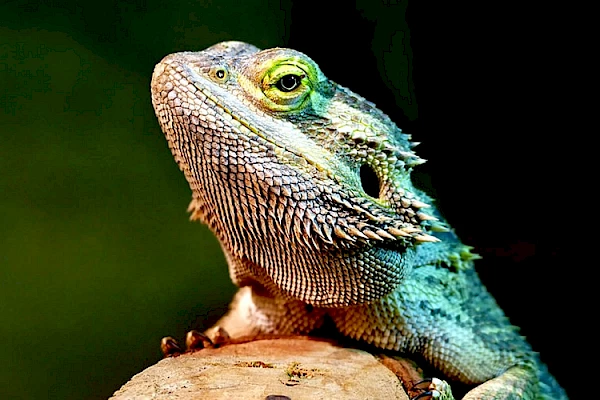
This mid-sized stocky arboreal lizard has prominent spines along its sides, a large triangular head and a spiny jaw pouch that looks like a beard when swollen. The color on its upper parts varies from shades of brown, gray, reddish-brown to bright orange while the ventral surface ranges from pale to dark gray with white elongated spots edged with black.
Mature males have dark beards that become black during courtship and breeding. Adults can grow up to 2 ft. in length, the tail accounting for more than half of this and males are larger than females. They are omnivores, consuming many types of insects, small vertebrates and vegetation including fruits and flowers. They are preyed on by dingos and monitor lizards. They reach sexual maturity at one to two years of age and females lay clutches of from 11-30 leathery oblong-shaped eggs in early summer in nests dug in sandy soil. The young hatch unattended three months later. Forming a shield-like structure around the snout is a spiny jaw pouch which, when inflated, looks like a beard and is used in courtship displays as well as to deter predators from attacking.
